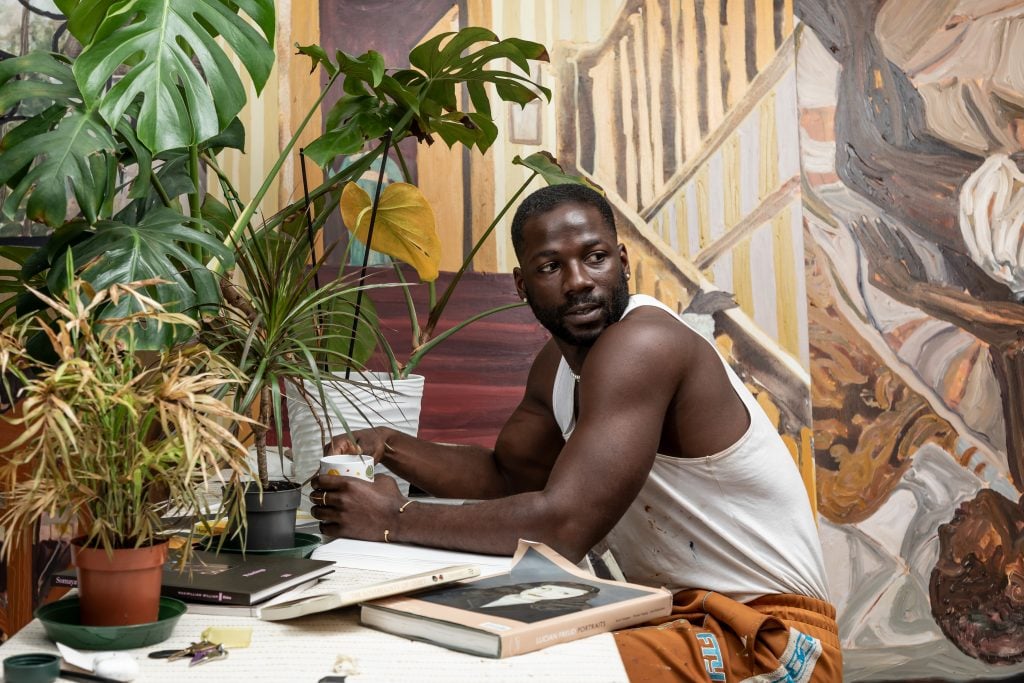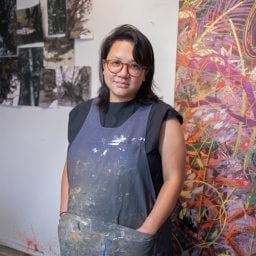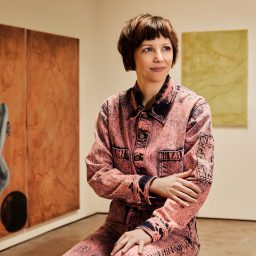“For a long time, I didn’t feel like I fit into certain narratives of history, but after a while, I started understanding why so many artists came to Monmarte. It’s very inspiring as a space and the energy is very pure,” said artist Ludovic Nkoth from a studio he’d rented for the summer in Paris.
The city was in the middle of a heatwave and Nkoth, who is typically based in New York, had just run out to buy a fan, but his spirits were high. He’d just completed a 10-month residency at Académie des Beaux-Art and had decided to stay on in the city a few more weeks, finishing up a new body of the gestural figurative paintings for which he is celebrated.
These works weren’t destined for any old gallery wall but Paris’s famed Maison La Roche, a villa designed by Le Corbusier and his cousin Pierre Jeanneret in the 1920s, where Nkoth will open his solo exhibition “What If.” Nkoth will be the only second living artist to show work in the house—famously the only project where Le Corbusier was given free rein of design—and the youngest (the exhibition opens October 16, coinciding with Paris+).
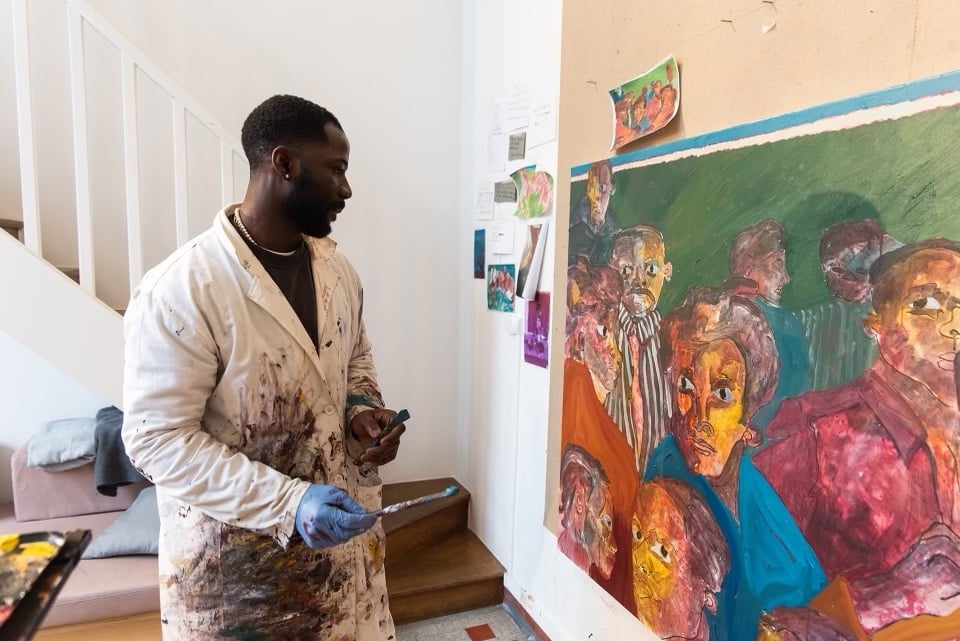
Ludovic Nkoth, 2023.
“I’m the first Black artist to be given Maison La Roche,” said Nkoth, “This isn’t a traditional white cube gallery, but a home. This home, Maison La Roche, has been the site of a lot of white, European history. I decided I wanted to fill the space with Black people. I think of the home as a place of rest. It’s rare that we associate the Black body with quietness and solitude, leisure, and rest and so I leaned into that with these new works. Even though, I admit, rest challenges my worldview, too. I struggle not to work constantly.”
The 28-year-old Cameroonian-born artist, who emigrated to South Carolina at the age of 13, has become something of an art-world wunderkind. His works are already in the collections of the Studio Museum in Harlem in New York; the Hammer Museum in Los Angeles; the ICA Miami, and the High Museum of Art in Atlanta. In June of this year, his painting Identity of the Moment sold for over $80,000 at Phillips.
But for Nkoth, the journey has been a whirlwind of constant labor, dating back to his high school years in South Carolina, as a teenager in an immigrant household. “I come from a place where making art for a living or being an artist was not considered a possibility. I literally did everything in my power to allow me to be where I am today. I remember I handed out business cards. I was passing them out everywhere,” he said with a laugh.
Nkoth moved to New York when he was accepted into the M.F.A. at Hunter University. “I have no idea how I got in. I look back at my life and there have been so checkpoints already. I’ve gone from one life to another to another and had to figure out how to recreate myself in the different places, I feel like I’ve lived so many lives already,” he explained.
The time spent in France has been an opportunity for Nkoth to slow life down a bit and has allowed him to reflect on his multifaceted identity and the history of French colonialism in Cameroon. “In Cameroon, tensions and conflict exist between the Francophone and Anglophone populations that are byproducts of these colonial histories. There are still links that exist between Cameroon and France. Being here has given me a new perspective on myself as an African European,” he said “Moving to the States, I slowly became part of African American history, but here I exist in a different context.”
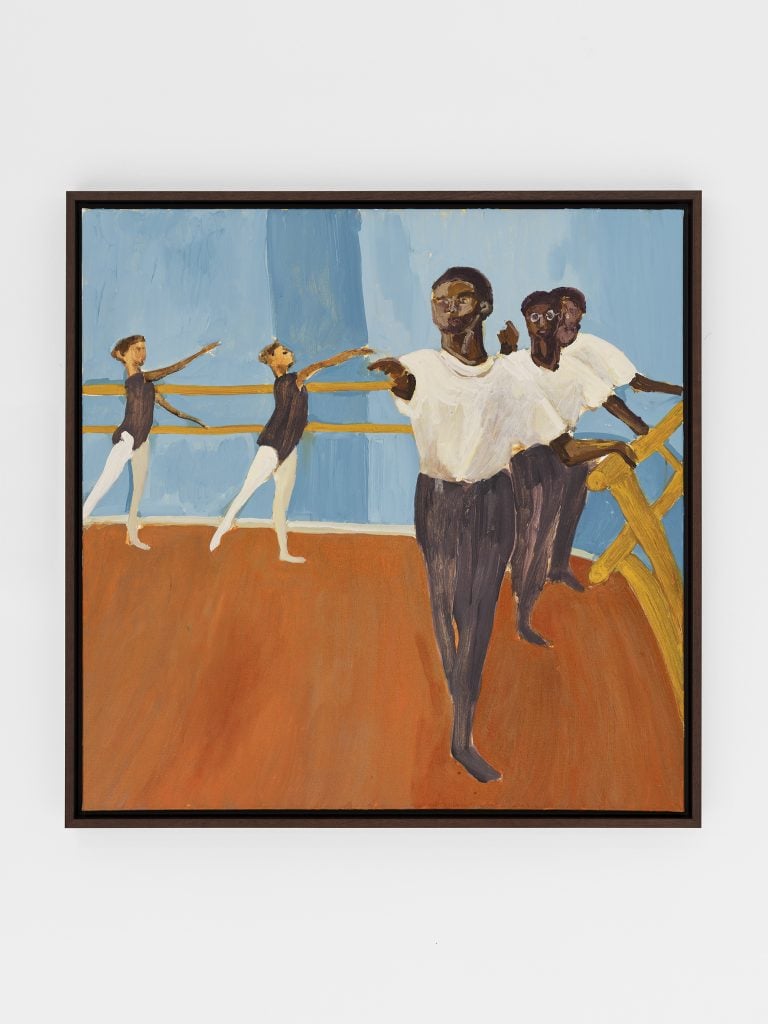
Ludovic Nkoth, Plié (2023). Courtesy of the artist and Massimo De Carlo Gallery.
Over the months in Paris, Nkoth found himself spending time with other Cameroon immigrants in Paris, breaking bread together at times, and listening and playing music (a favorite respite for the artist).
“It has been very nourishing for my practice. I am always a search of this idea of home, ideas of belonging and fitting in,” he said “When you relocate or are displaced, you find a new idea of home. I was fully interested in learning their stories, listening to them, and just documenting our time together.”
These experiences oriented his residency, too. “The stories I have been investigating in these works are centered on immigrants, the way they live their lives, the idea of home for them,” he explained “These paintings are snapshots of moments, personal moments of being.”
The time has reshaped his understanding of art historical dialogue, too. Soon after arriving, Nkoth saw the exhibition “Claude Monet – Joan Mitchell” at Fondation Louis Vuitton. “Oh my goodness, the way that two artists from different times were looking at the same subjects and making these opposite visions just took me out,” he said “Still, they were using color with such confidence and sophistication.”
The exhibition also offered him a framework for engaging with Le Corbusier. “We associate Le Corbusier with his architectural practice, but he was also a painter and sculptor. He, Picasso, and so many artists of that time were looking at African art. I grew up on the continent watching these masks and works being made,” he said. “The conversation is already there; it’s all just an interesting playground of thought across time.”
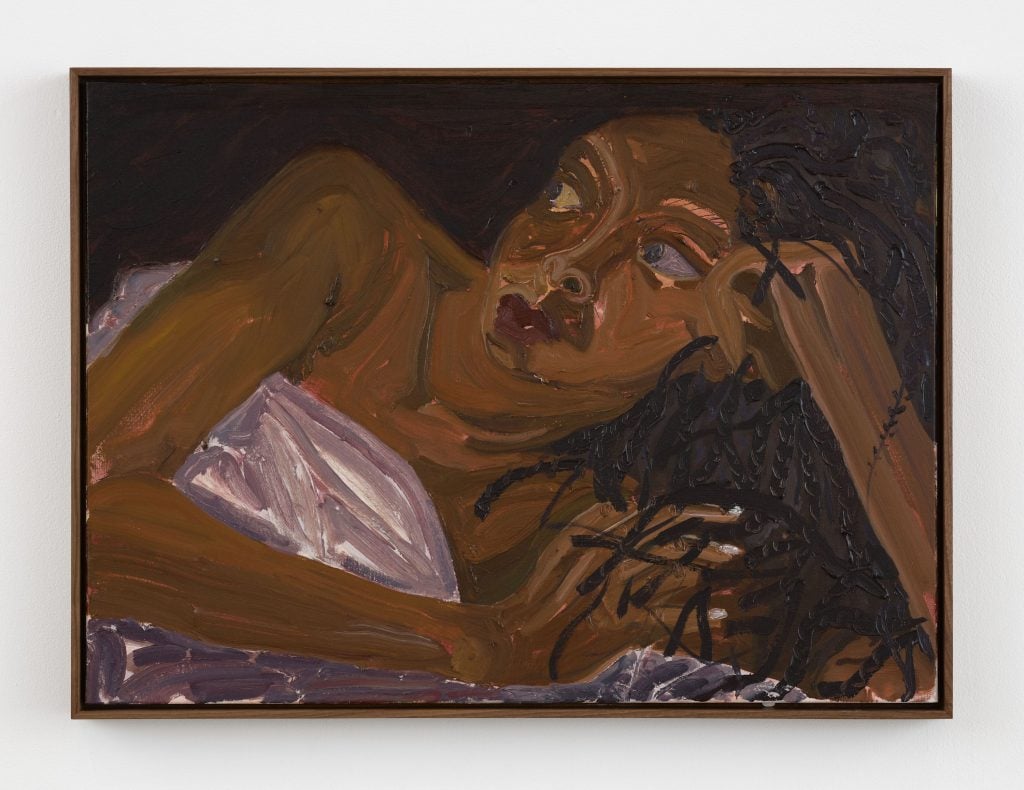
Ludovic Nkoth, Soliloquy (2023). Courtesy of the artist and François Ghebaly.
Nkoth thrives in this nexus of cultures, geographies, and interpersonal connections. Coinciding with the exhibition at Maison La Roche, he is also opening “The Is of It” a solo exhibition at François Ghebaly in downtown Los Angeles (October 7–November 11), featuring a suite of portraits he also created during the Paris residency. Nkoth says he was deeply influenced by Brazilian novelist Clarice Lispector’s 1973 novel Água Viva, a rhapsodic, stream-of-consciousness telling of a painter’s experience of life and time. “It made me want to grab hold of the present, to find a place in the moment” Nkoth explained. Lispector was a Ukrainian immigrant to Brazil, a shared experience he noted.
Still, the young artist has already found ways of maintaining stillness in the constant evolution of his career. Around his neck, he wears a necklace with the likeness of an African mask.
“When I moved to the States, my father had a few masks from the continent around the house. One mask just looked like it was full of history, it was even missing some parts. I spent 11 years in the United States before going back, where there were my memories and my mother. That mask was a way for me to get to be in conversation with home,” he said. “At some point, I started signing this mask on the back of my work, like a logo ‘made in Africa.’ A few years ago, I made a friend who makes jewelry and I commissioned him to make a version of that mask for me in 2019. Now, everywhere I go, it goes.”
